Feature
PEEP and the Big Wide World
Reaching a Neglected Group of STEM Educators in Family Childcare
Connected Science Learning October-December 2017 (Volume 1, Issue 4)
By Borgna Brunner
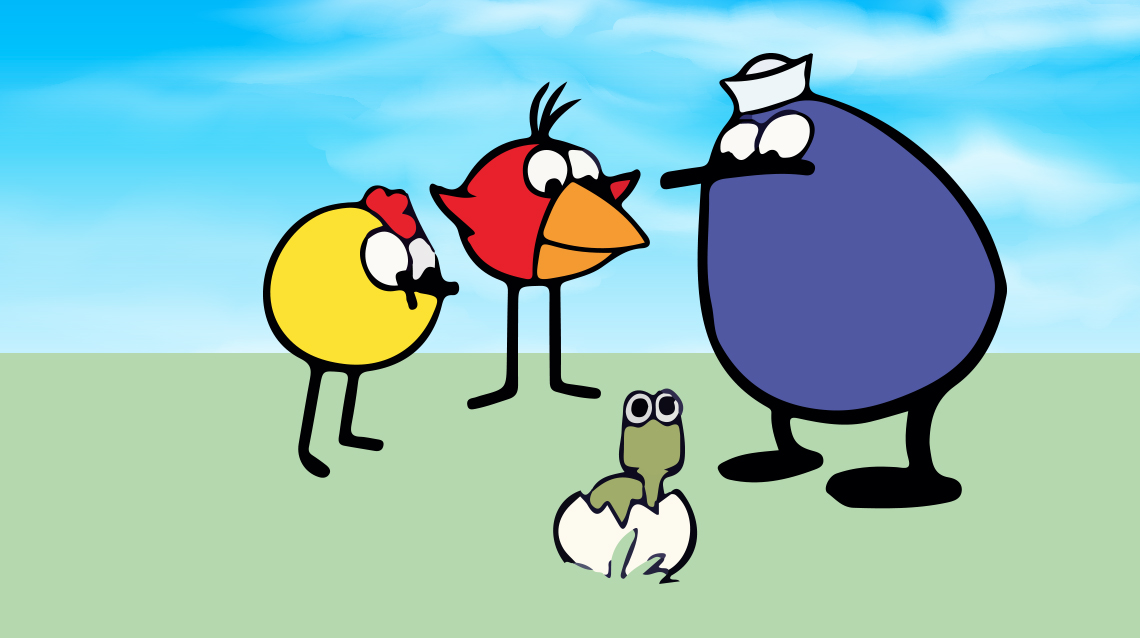
PEEP and the Big Wide World is a public television show and website devoted to engaging preschool-aged children in developmentally appropriate science. PEEP’s newest effort is to address the needs of home-based, family childcare educators, who provide childcare for approximately 26% of U.S. children.
PEEP and the Big Wide World is an animated public television show about the adventures of a young chicken named Peep, and his friends Chirp and Quack. Together they explore the city park where they live, discovering the wonders of the world around them. The show first aired on public television in 2007 with the aim of bringing a comprehensive, age-appropriate science program to children between three and five years old, and provides free educational resources in English and Spanish. Each episode of PEEP and the Big Wide World presents two STEM concepts and includes short live-action segments of real kids investigating these concepts in their own communities. The show’s accompanying website is a critical component of its educational outreach, providing games and videos that engage children in further learning about the concepts they saw on the show. With each new season, WGBH, the public broadcaster that produces the show, seeks to expand the show’s reach to include more diverse and underserved audiences.
PEEP programming consists of six components:
- PEEP on TV
- PEEP Digital Experience for Kids
- Educational Outreach
- Educational Outreach for Educators
- Anywhere Activities for Parents
- Event Kit and Workshops for Informal Educators
See Appendix A in References for more information about PEEP media and resources.

Family Childcare Educators: PEEP’s Newest Audience
As WGBH continued to expand PEEP’s educational resources, we became aware of the unique needs of another set of teachers: family childcare educators. Approximately 26% of U.S. children in childcare who are under the age of six attend a home-based program run by a family childcare educator (defined as an individual caring for children in his or her private residence, who is licensed for infants, toddlers, preschoolers, and school-age children) (Rusby 2002). That means these educators play a considerable role in the early learning and school readiness of many of America’s preschoolers.
There are a variety of reasons parents might send their children to a home-based childcare program instead of a center-based preschool held in a school, church, community center, or elsewhere:
- Many preschools for low-income families have waiting lists. As of 2013, for example, only 42% of eligible three- and four-year-olds were able to participate in Head Start.
- Home-based care allows for more flexible pick-up and drop-off times, and offers longer hours than preschool—essential for many working parents.
- A family childcare provides a homelike environment, a smaller educator-to-child ratio (with most states permitting a maximum of six children per educator), and the potential for a child to develop a closer bond with the educator.
- Because family childcare accepts mixed-age groups, siblings can remain together.
- For many Latino families, a Spanish-speaking family childcare is often more socially and culturally compatible.
- Family childcare may also be more affordable than preschool.
Undervalued as Educators
But when it comes to advancing a young child’s intellectual development, the great majority of parents and educators see center-based preschools as the superior choice. According to Ellen Galinsky, president of the Families and Work Institute, “if a large opinion survey were conducted on the difference between schools and childcare, school-based programs would be described as more educationally focused, while childcare programs would be seen as more custodial” (Babycenter 2016). Although preschool teachers have never enjoyed a revered occupational status, family childcare educators find themselves at the bottom of the barrel— “perceived with low prestige (e.g., as a babysitter) by the workforce in general, and by individuals in the education and childcare fields in particular” (Harper Browne 2009). Even the term family childcare educator is a newly coined name; childcare provider is still far more common. Valued for their caregiving skills and flexible schedules, these caregivers are rarely considered educators and usually don’t receive the same respect.

Why Preschool Science for Family Childcare Educators?
As a society, we’ve long recognized the need to raise the standard of preschool instruction to ensure that children entering kindergarten are well prepared to learn. Yet professional development resources for preschool educators vary greatly and may be unreliable in terms of both quality and frequency with which they are delivered (Harper Browne 2009). Moreover, few of these resources cover science teaching. Many parents and educators prioritize children’s language and literacy, given the research connecting children’s early language acquisition to success in school. But as Karen Worth, PEEP’s Science Content Director, has written, “There is a growing understanding and recognition of the power of children’s early thinking and learning as well as a belief that science may be a particularly important domain in early childhood, serving not only to build a basis for future scientific understanding but also to build important skills and attitudes for learning” (Worth 2010). Early science not only taps into children’s natural curiosity and wonder about the world around them, it also provides a foundation that is critical to success later in school.

The Challenges of Home Childcare
To learn more about the needs of family childcare educators, we conducted a front-end needs assessment with educators who cared for children who speak English and Spanish and ranged in age from infant to five years. These educators told us that their major problems were the lack of permanent learning centers and little to no access to the same material and financial resources that are available to preschool teachers. They needed resources that would work for the home environment. They also needed ways to offer science explorations that took into account children’s unpredictable schedules and accommodated children of varying ages. Many of the educators said they felt isolated, with few opportunities to meet their peers or to receive formal supervision or ongoing professional development. Given their long workdays—some home childcare educators work as many as 12 hours a day—they have little time to prepare ahead, review a lesson, or reflect on their teaching.
When asked about exploring science with children, they said “comfort” with the subject was the main barrier and, to address this, they would need more professional development (PD), especially if they could participate in the PD at home at a convenient time. Because the participants in this focus group were all members of a childcare resource and referral agency, they also suggested that the most effective way to reach family childcare educators would be to partner with these agencies.
These family childcare educators’ interest in teaching preschool science and their desire for professional development inspired us to do what they asked: create PD materials tailored to the realities of their work environments. At the same time, we recognized that to use the PEEP Science Curriculum to its full advantage, all educators—family home care educators and preschool teachers––would benefit from professional development. As a result, we produced three separate video-based PD programs serving:
For each of the six science content areas of the PEEP curriculum (water, shadows, sound, color, ramps and movement, and plants), we produced four videos that feature educators addressing the challenges and rewards of teaching preschool science. Each video illustrates one of four key PD topics:
- setting up science learning environments,
- engaging children in science talk,
- documenting investigations for later reflection,
- and individualizing instruction.
PD Tailored to Family Childcare Educators
The two PD topics where there was the greatest difference between family childcare educators’ and preschool teachers’ experiences were setting up science learning environments and offering individualized instruction.
Science Learning Environments
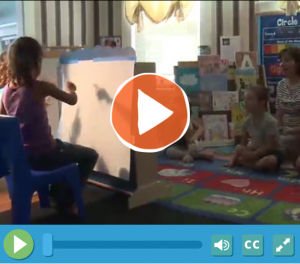 Science learning centers are effective ways to engage children and motivate them to experiment, test, and investigate. But unlike preschools, it’s not always possible to have permanent learning centers in the home—many homes need to be changed back into family spaces at the end of the day or week. The video models how family childcare educator Jackie created temporary, flexible spaces in both indoor and outdoor areas so that she and the children in her care could explore shadows. The video also models how Jackie was able to work with what she had in her home environment—creating a rich learning environment that didn’t rely on the same materials available in preschools.
Science learning centers are effective ways to engage children and motivate them to experiment, test, and investigate. But unlike preschools, it’s not always possible to have permanent learning centers in the home—many homes need to be changed back into family spaces at the end of the day or week. The video models how family childcare educator Jackie created temporary, flexible spaces in both indoor and outdoor areas so that she and the children in her care could explore shadows. The video also models how Jackie was able to work with what she had in her home environment—creating a rich learning environment that didn’t rely on the same materials available in preschools.
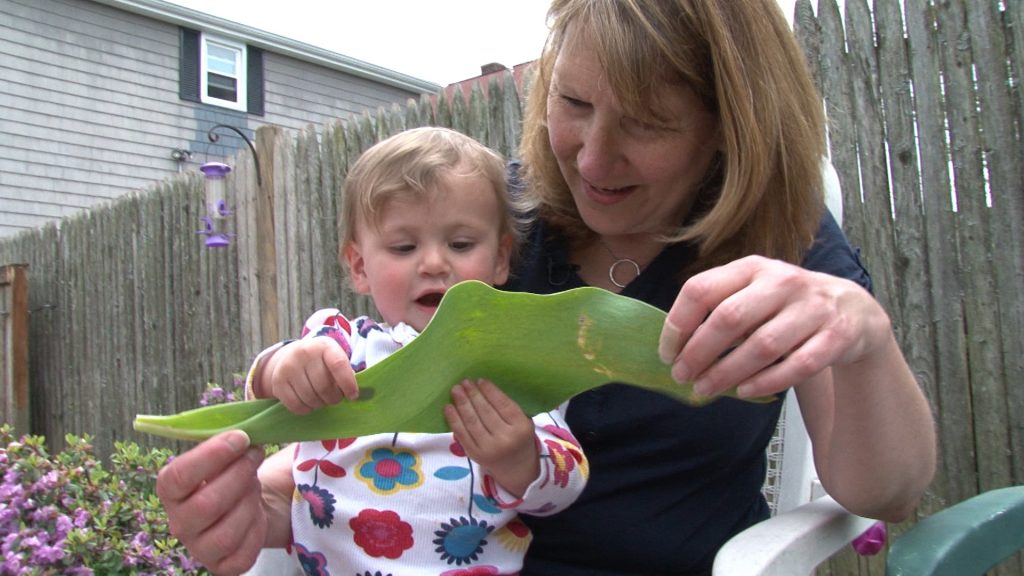
Individualized Instruction
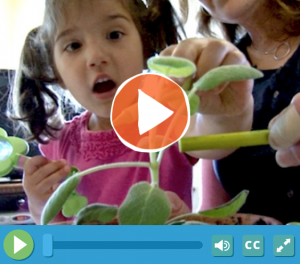 Individualized instruction is a way of teaching that takes into account each child’s unique characteristics, including age, developmental stage, interests, and learning styles. With an awareness of children’s differences, an educator can plan learning centers and activities, offer instructions or explanations, and encourage children to express their ideas and experiences in a way that’s effective and appropriate. In a family childcare setting, children’s ages often vary greatly. It’s not uncommon for an educator to care for a toddler and a five-year-old, and it’s a challenge to offer group activities that work for children at widely different developmental stages. In this video, Kathy models how to work with children ranging from one to five years old as she explores color with them.
Individualized instruction is a way of teaching that takes into account each child’s unique characteristics, including age, developmental stage, interests, and learning styles. With an awareness of children’s differences, an educator can plan learning centers and activities, offer instructions or explanations, and encourage children to express their ideas and experiences in a way that’s effective and appropriate. In a family childcare setting, children’s ages often vary greatly. It’s not uncommon for an educator to care for a toddler and a five-year-old, and it’s a challenge to offer group activities that work for children at widely different developmental stages. In this video, Kathy models how to work with children ranging from one to five years old as she explores color with them.
Seeing Themselves in the Videos
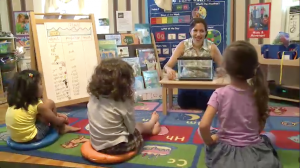
Family childcare educators generally expressed less confidence in their ability to lead science activities than preschool teachers. This is why it is so important for family childcare educators to see themselves in the videos, in a home-based setting that is relatable and familiar. For the two remaining PD topics, Science Talk and Documentation and Reflection, the content of the center- and home-based videos is very similar. The major difference is that the family childcare educators see the strategies modeled in a home-based environment similar to their own.
Science Talk
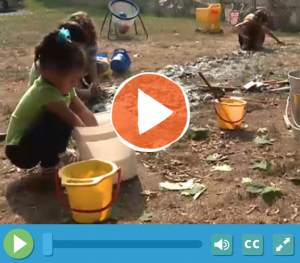 As children investigate and explore, they need to talk about their work just the way scientists would—this is “science talk.” Science talk happens when children ask questions, make comparisons and predictions, share and discuss results, and learn new words to describe what they are seeing and doing. In this video, Jackie models how to encourage science talk as she and the children she cares for explore water.
As children investigate and explore, they need to talk about their work just the way scientists would—this is “science talk.” Science talk happens when children ask questions, make comparisons and predictions, share and discuss results, and learn new words to describe what they are seeing and doing. In this video, Jackie models how to encourage science talk as she and the children she cares for explore water.
Documentation and Reflection
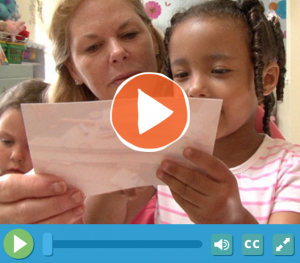 Recording children’s science explorations through drawings, charts, photos, and other documentation helps children reflect on and learn from their experiences. In this video, Brenda and Lourdes model how to document children’s science explorations to help the children think more deeply about their discoveries.
Recording children’s science explorations through drawings, charts, photos, and other documentation helps children reflect on and learn from their experiences. In this video, Brenda and Lourdes model how to document children’s science explorations to help the children think more deeply about their discoveries.
The PD is delivered in two ways:
- Self-paced: Educators can use it on their own at home and access it repeatedly. Each video comes with a PDF that highlights effective teaching practices and encourages self-reflection. Educators can print it out or use it online. (See the Science Talk PDF for Plants).
- Group training: Childcare agencies may hold group professional development training. Supporting materials include a facilitator’s guide, PowerPoint presentations, and handouts.
In addition to the self-paced and facilitated versions of the PD on the PEEP website, PBS LearningMedia features the PEEP PD on its site (also free of charge). In 2017, PBS TeacherLine began offering a version of the PD called Science Teaching Strategies for Family Childcare Educators for CEU credits. TeacherLine also offers a free, not-for-credit version.
Pilot Study[1]
To inform the design of the PD, we relied on the findings of a study conducted by the UMass Donahue Institute (2014). They piloted three of the three-week curriculum modules and the related professional development materials with eight family childcare organizations, four in Massachusetts and four in California. Evaluation activities included pre- and post-surveys, focus groups with participants, and interviews with trainers. Participants spoke either English or Spanish as their primary language, and 140 educators completed the study.
Overall, organizations and providers were very positive about their experiences using the PEEP and the Big Wide World online professional development modules and curriculum units (UMass Donahue Institute 2014). They enjoyed the teaching strategies, the activities, the videos, and that the activities were structured to be consistent with best practices in the early education field. There was a statistically significant increase in family childcare educators reporting that their skills as a science educator increased over time (UMass Donahue Institute 2014). In addition, educators reported a statistically significant increase both in doing science activities with children and in their comfort level with these activities. The activities included asking children to share their discoveries with each other during science activities; responding when a child asks science-related questions; incorporating activities on the same topic for children of different ages and abilities; recording science explorations (charts, photos, etc.) to help children reflect on their experiences; designing areas for science exploration that motivate and engage children; and asking questions, making comparisons, discussing results, and sharing new vocabulary while teaching science (UMass Donahue Institute 2014).
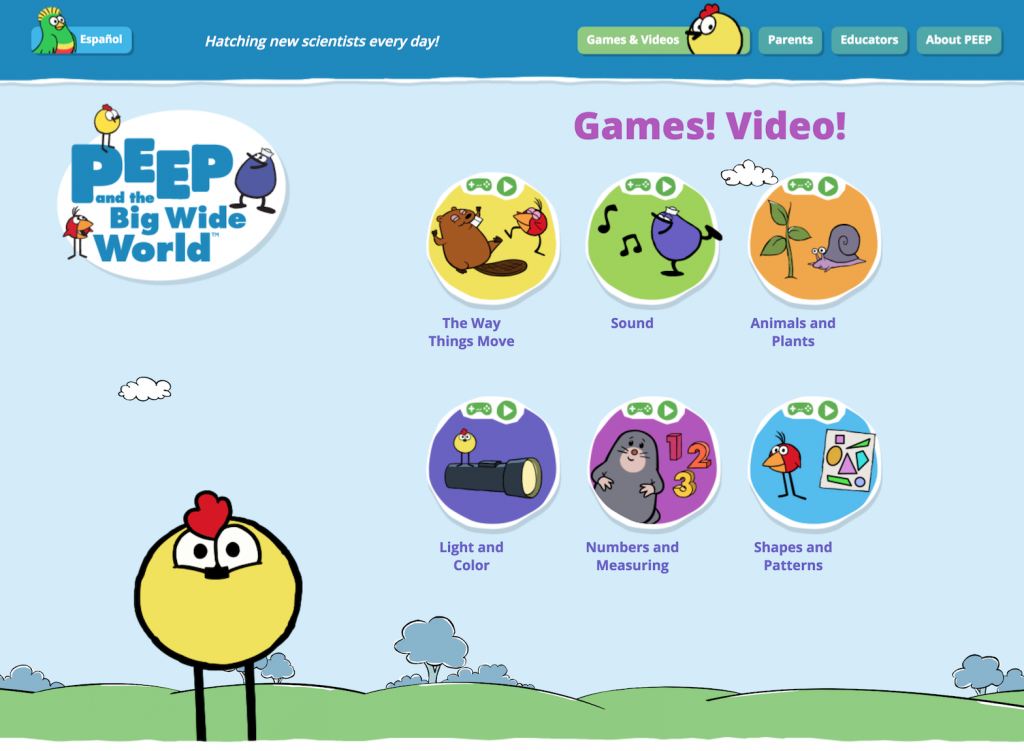
One of the biggest issues raised by the evaluation was the difficulty many educators had navigating the PEEP website (UMass Donahue Institute 2014). Many of the family childcare educators participating in the study were not computer literate, with the Spanish-speaking educators even less experienced than their English-speaking counterparts. To address this, we provided a map to orient providers to each curriculum module as soon as they chose a science content area to explore. This map took the form of a curriculum planner—it showed the entire week at a glance so that providers could see all the suggested activities and how to access them. We also streamlined the supporting material—lists of books, videos, and games and tips for teaching with technology—and put it all in one place on the website.
Family childcare educators also felt that there were too many activities for them to complete in the suggested time and that the schedule was not flexible enough for their situations (UMass Donahue Institute 2014). Acknowledging the realities of their days, we addressed this by providing options for them to spread activities over a longer period of time.
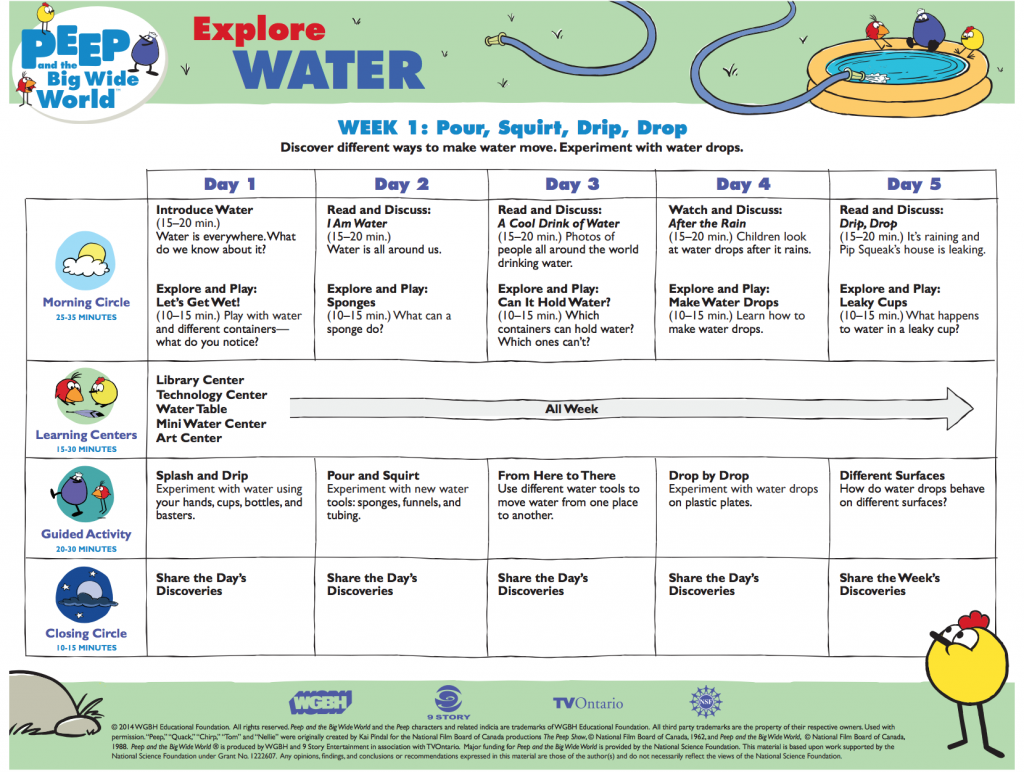
Finally, many educators requested that the curriculum be available in print. (During the evaluation, some of the sponsoring organizations laboriously printed out the entire curriculum and placed it in binders for educators.) (UMass Donahue Institute 2014). Prior to the study, our web team had redesigned the PEEP website to incorporate a responsive design that adapted to whatever computer or mobile device it was viewed on. Their assumption was that this would make using the PEEP resources easy and convenient for educators. But from the family childcare educator’s point of view, accessing information on an activity via a computer while in the middle of doing the activity with kids, or squinting to read the instructions on their cell phones, was a burden rather than an advantage. Providing print materials, however, might result in educators bypassing the media that was designed to enrich the experience, such as PEEP videos and games for the children in their care and professional development videos.
To address this understandable concern, we made select components of the curriculum, such as hands-on activities, more print-friendly for those who wished to work from printed materials while conducting an activity. A truly responsive design needed to respond to the fact that some educators favor printed hard copies, and our job was to help provide them with a bridge between print and digital resources.
Implications for the Informal Science Education Field
For many children, preschool provides opportunities to engage in meaningful science learning. However, for the 45% of American three- and four-year-olds who do not attend preschool (U.S. Census 2013), opportunities for science enrichment are limited. Thus, there is an urgent need to find new avenues for bringing early science experiences to preschool-age children. Marta Rosa, childcare consultant and former director of the Child Care Resource Center (CCRC), stresses that family childcare educators are important stakeholders for reaching young children and engaging them in science exploration. This point was emphasized in Rosa’s comments in the PEEP and the Big Wide World’s proposal to the National Science Foundation: “As our country becomes global, family childcare educators are an amazing asset to the most racially, linguistically, and ethnically diverse neighborhoods, families, and children today. They are small businesses that need professional development that is accessible, culturally relevant, and language appropriate. Building to their capacity will greatly enhance our children’s ability to succeed.”
Since the completion of this project, we have used its findings in the creation of a new project targeting another underserved audience: the home educators serving low-income parents whose children do not attend preschool or family childcare. Their goal is to help those parents gain the skills and tools they need to foster their children’s healthy development and school readiness. These home educators also need access to science education resources for young children. As we continue expanding our efforts to reach as many underserved communities as possible, we urge others in the informal education field to consider family childcare and home educators, and the children who attend their programs, when designing resources.
[1] This pilot study employed a mixed methods research design encompassing both quantitative and qualitative methods that informed revisions and measured the impact of the curriculum. In addition, summative evaluation was used to assess additional target audiences for the project, including English- and Spanish-speaking families and preschool educators.
Borgna Brunner (borgna_brunner@wgbh.org) is an editorial project director at WGBH Educational Foundation in Boston, Massachusetts.



